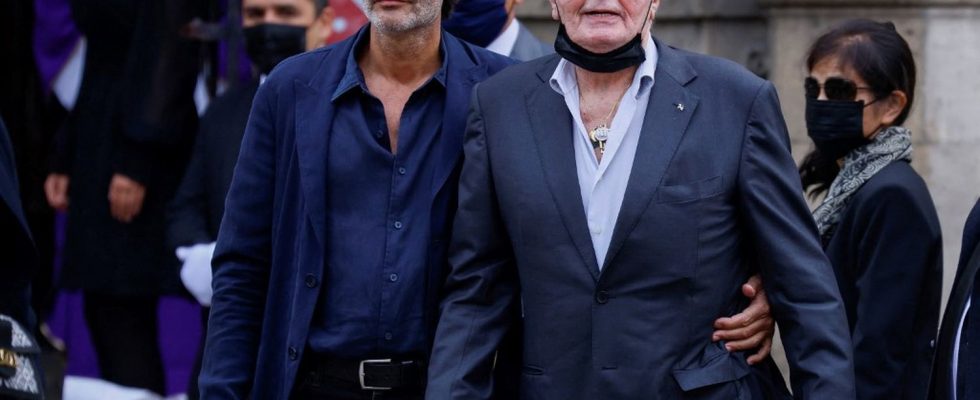Anthony Delon posted on Instagram an e-mail attributed to the Montargis prosecutor, in which the “totally abolished discernment” of his father, Alain Delon, is mentioned.
Published
Reading time: 3 min

Alain Delon’s mental faculties are at the heart of the conflict that is tearing his family apart. The actor’s eldest son, Anthony Delon, posted on the social network Instagram, Thursday January 4, what he presents as an e-mail from the prosecutor of Montargis (Loiret) addressed to his lawyer. In this message signed by Jean-Cédric Gaux, it is a question ofs “conclusions of the medical expertise” by Alain Delon “according to which his discernment is totally abolished”. And of “the opening of a procedure for placing under judicial protection” considered.
The 88-year-old actor, who appeared emaciated in a photo posted on Instagram by his youngest child, Alain-Fabien, on Christmas Eve, suffered a serious stroke in July 2019. In a recent interview at Paris MatchAnthony Delon claims that his father is “weakened” And “can no longer stand seeing yourself like that, diminished”. “He doesn’t speak much, it tires him or it annoys him when we make him repeat, because his voice is no longer always placed, I mean audible”, he elaborates. The son of the former film star also claims to have filed a complaint against his sister Anouchka, accusing her of not having informed him that their father would have failed to “five cognitive tests” carried out between 2019 and 2022.
Asked by AFP, the prosecutor declared “I do not wish to comment on what concerns a confidential exchange with the lawyers of Alain Delon and his children” and reminded “that respect for the dignity of the human person is a fundamental right”. But when it is triggered, what does this placing under legal protection consist of?
Guardianship, the most restrictive measure
Legal protection is primarily exercised by the family when the situation allows it. It can be decided by a judge when illness, aging, disability or an accident alter a person’s faculties and make them incapable of defending their own interests, as explained on the Public Service website. According to’article 415 of the Civil Code, “adult persons receive the protection of their person and property that their condition or situation makes necessary.”
The best known and most restrictive form is guardianship. It concerns adults who have lost their autonomy and are no longer able to carry out the acts of the daily life. The request must be made to a judge in protection disputes (former guardianship judge) by a parent or ally, a relative or the public prosecutor. In terms of the opinion of the doctor who issued the medical certificate, the judge may decide not to hear the person concerned. But he must summon it and hear the person making the request. The judge then appoints one or more guardians, chosen as a priority from among the relatives. When this is not possible, a professional can be appointed. Guardianship can last between five and twenty years maximum.
Safeguarding justice, the most immediate measure
Curatorship is a more flexible measure. The person remains independent in simple acts of daily life, but must be supported for important acts, such as a loan from the bank or the sale of real estate. There are several degrees of curatorship, simple, reinforced or modified, which more or less limit the acts that the person to be protected can perform. Here again, the curator is chosen as a priority from among relatives. But if a risk of conflict of interest exists, the judge can appoint an external curator.
The safeguard of justice, finally, is a protective measure of short duration. For people whose faculties are more seriously affected, it can be decided immediately, pending the judgment concerning a guardianship or a guardianship. There are two types of safeguard: a medical one, put in place after a declaration made by a doctor to the public prosecutor’s office, and a judicial one, triggered after the request of the person themselves or a third party – parent, relative or prosecutor. If it is pronounced,a person retains the right to perform all acts of civil life, except those entrusted to the special mandatary, as release of life insurance to pay for a retirement home for example. The maximum duration of the legal protection is one year, renewable once.
